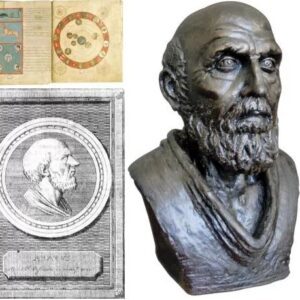
Egypt, land of ancient wonders, continues to amaze with the discovery of several mummies adorned with gold tongues at a long-excavated site. The mystery behind why these precious metal tongues were placed in the mouths of the deceased is one that has puzzled archaeologists for centuries. Some experts believe that the tongues may have symbolized the wealth and status of the upper class members who were buried with them, while others suggest that they may have had a more practical purpose, ensuring the ability to speak in the afterlife. With the secrets of the past slowly being uncovered, the discovery of these golden-tongued mummies is yet another tantalizing glimpse into the fascinating customs and beliefs of ancient Egyptian society.
Mummies Were Unearthed at an Ancient Cemetery in Quesna
 On November 24, 2022, the Egyptian Ministry of Tourism and Antiquities announced the discovery of Ancient Egyptian mummies in Quesna, located about 35 miles north of Cairo, through a Facebook post. These mummies, believed to date back to the Greco-Roman period, were found in an extension of the Qwaisana Archaeological Compound, some of which were inside wooden coffins. Among the items unearthed alongside the mummies were necklaces, pottery, and gold artifacts shaped like lotus flowers and scarabs. However, the most intriguing aspect of this discovery is the presence of gold tongues on some of the mummies, with a gold glaze beneath their linens.
On November 24, 2022, the Egyptian Ministry of Tourism and Antiquities announced the discovery of Ancient Egyptian mummies in Quesna, located about 35 miles north of Cairo, through a Facebook post. These mummies, believed to date back to the Greco-Roman period, were found in an extension of the Qwaisana Archaeological Compound, some of which were inside wooden coffins. Among the items unearthed alongside the mummies were necklaces, pottery, and gold artifacts shaped like lotus flowers and scarabs. However, the most intriguing aspect of this discovery is the presence of gold tongues on some of the mummies, with a gold glaze beneath their linens.
According to Salima Ikram, an Egyptology professor at the American University in Cairo, it was a common practice between 300 BCE and 640 CE to remove the actual tongues during the embalming process and replace them with metal plates. The gold-leaf tongues found on these mummies are particularly noteworthy as they are considered a hallmark of the later Greco-Roman period funerary preparations, during which golden tongues and sometimes even gold eyes were placed on embalmed bodies.
Other Mummies Have Been Discovered With Gold Tongues

In 1989, the Quesna archaeological site was initially uncovered, which is now recognized as one of the most significant in the Delta. Interestingly, the mummies recently discovered with gold tongues were not the first to be found with this feature.
During the year 2021, while excavating the 2,000-year-old burial ground, researchers stumbled upon a skull with a tongue-shaped embellishment hanging from its mouth. Towards the end of that same year, several more mummies were unearthed with the same attribute, including a man, woman, and child, all sporting gold-leaf tongues.
These newly found mummies were located within an expansion of the original site, known as the Qwaisana Archaeological Compound, which was believed to have served as a burial ground throughout history. Different burial patterns have been discovered, allowing the identification of three distinct periods thus far.
The Gold Tongues May Have Allowed the Dead to Speak to Osiris

Archaeologists have pondered the reasoning behind the ancient Egyptian’s unique burial tradition of placing gold tongues in the mouths of the deceased. Many have speculated that it may be connected to Osiris, the “Lord of Silence,” who was believed to dwell among the dead.
Gold was considered the “flesh of the gods,” and the use of gold-leaf eyes and tongues was likely an embodiment of the transformation of the deceased into divine beings. The placement of gold tongues in the mummies’ mouths may have been the ancient Egyptians’ way of ensuring that they could communicate with Osiris silently in the afterlife.
This intriguing burial custom adds to the already vast body of knowledge that exists about the beliefs and practices of ancient Egypt.





